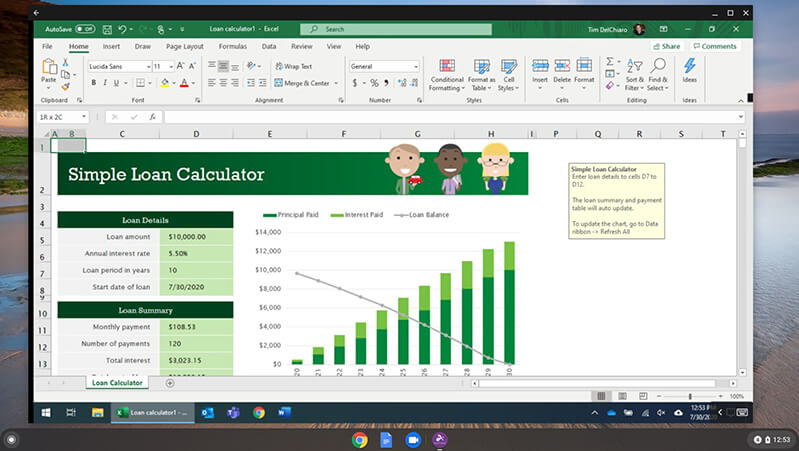Applies To: Windows Server (Semi-Annual Channel), Windows Server 2016, Windows Server 2012 R2, Windows 10

The Remote Access guide provides you with an overview of the Remote Access server role in Windows Server 2016, and covers the following subjects:
For more information about other networking technologies, see Networking in Windows Server 2016.
If you’re looking for remote access software that’s simple, straightforward, and easy to use, Splashtop is an excellent choice. For $5 a month, you can enjoy remote access from any device on up to two computers with file transfer, remote print, audio access, and logging capabilities. Over the years folks have asked me about using MS Access in a remote environment. In time, using a remote desktop setup surfaced as the best remote environment solution for MS Access. Quick Assist is a new app in Windows 10 that enables you to receive or provide assistance over a remote connection. We encourage you to try Quick Assist for a more streamlined, easy-to-use experience. Do I have to have Windows 10 Pro to get remote access? Is there other software to do this? Is 10-Pro required on both computers, if I have to get 10-Pro?
The Remote Access server role is a logical grouping of these related network access technologies: Remote Access Service (RAS), Routing, and Web Application Proxy. These technologies are the role services of the Remote Access server role. When you install the Remote Access server role with the Add Roles and Features Wizard or Windows PowerShell, you can install one or more of these three role services.
Important
Do not attempt to deploy Remote Access on a virtual machine (VM) in Microsoft Azure. Using Remote Access in Microsoft Azure is not supported. You cannot use Remote Access in an Azure VM to deploy VPN, DirectAccess, or any other Remote Access feature in Windows Server 2016 or earlier versions of Windows Server. For more information, see Microsoft server software support for Microsoft Azure virtual machines.
Remote Access Service (RAS) - RAS Gateway

Best Remote Access Software
When you install the DirectAccess and VPN (RAS) role service, you are deploying the Remote Access Service Gateway (RAS Gateway). You can deploy the RAS Gateway a single tenant RAS Gateway virtual private network (VPN) server, a multitenant RAS Gateway VPN server, and as a DirectAccess server.

RAS Gateway - Single Tenant. By using RAS Gateway, you can deploy VPN connections to provide end users with remote access to your organization's network and resources. If your clients are running Windows 10, you can deploy Always On VPN, which maintains a persistent connection between clients and your organization network whenever remote computers are connected to the Internet. With RAS Gateway, you can also create a site-to-site VPN connection between two servers at different locations, such as between your primary office and a branch office, and use Network Address Translation (NAT) so that users inside the network can access external resources, such as the Internet. In addition, RAS Gateway supports Border Gateway Protocol (BGP), which provides dynamic routing services when your remote office locations also have edge gateways that support BGP.
RAS Gateway - Multitenant. You can deploy RAS Gateway as a multitenant, software-based edge gateway and router when you are using Hyper-V Network Virtualization or you have VM networks deployed with virtual Local Area Networks (VLANs). With the RAS Gateway, Cloud Service Providers (CSPs) and Enterprises can enable datacenter and cloud network traffic routing between virtual and physical networks, including the Internet. With the RAS Gateway, your tenants can use point-so-site VPN connections to access their VM network resources in the datacenter from anywhere. You can also provide tenants with site-to-site VPN connections between their remote sites and your CSP datacenter. In addition, you can configure the RAS Gateway with BGP for dynamic routing, and you can enable Network Address Translation (NAT) to provide Internet access for VMs on VM networks.
Important

The RAS Gateway with multitenant capabilities is also available in Windows Server 2012 R2.
- Always On VPN. Always On VPN enables remote users to securely access shared resources, intranet Web sites, and applications on an internal network without connecting to a VPN.
For more information, see RAS Gateway and Border Gateway Protocol (BGP).
Routing

You can use Remote Access to route network traffic between subnets on your Local Area Network. Routing provides support for Network Address Translation (NAT) routers, LAN routers running BGP, Routing Information Protocol (RIP), and multicast-capable routers using Internet Group Management Protocol (IGMP). As a full-featured router, you can deploy RAS on either a server computer or as a virtual machine (VM) on a computer that is running Hyper-V.
To install Remote Access as a LAN router, either use the Add Roles and Features Wizard in Server Manager and select the Remote Access server role and the Routing role service; or type the following command at a Windows PowerShell prompt, and then press ENTER.
Web Application Proxy
Microsoft Remote Control Software
Web Application Proxy is a Remote Access role service in Windows Server 2016. Web Application Proxy provides reverse proxy functionality for web applications inside your corporate network to allow users on any device to access them from outside the corporate network. Web Application Proxy pre-authenticates access to web applications using Active Directory Federation Services (AD FS), and also functions as an AD FS proxy.
To install Remote Access as a Web Application Proxy, either use the Add Roles and Features Wizard in Server Manager and select the Remote Access server role and the Web Application Proxy role service; or type the following command at a Windows PowerShell prompt, and then press ENTER.
For more information, see Web Application Proxy.
